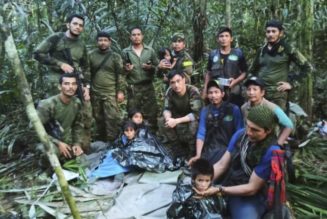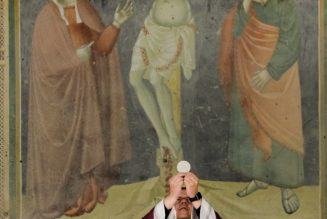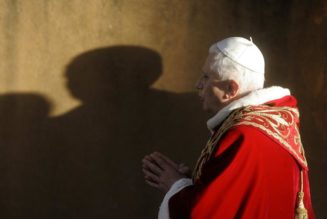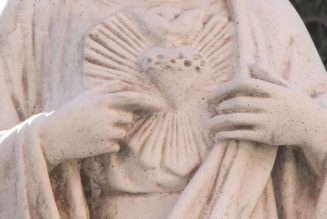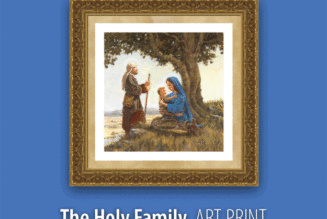
July 17, 1781, in Yuma, Arizona, was, like virtually all July days along the lower Colorado River, filled with bright sunshine and extreme heat. Soon it also would be filled with the screams of warriors, the musket shots of soldiers, and the moans of the dying.
The Quechan Indians had risen up against the Spaniards among them. Within four days, 131 Spanish would be dead, including four Franciscan missionaries: Fathers Francisco Garcés, Juan Antonio de Barreneche, José Matías Moreno and Juan Díaz.
By 1781, Quechan hostility toward the Spanish had been rising for several years. But at first, thanks largely to the earnest, likable and peaceable Father Garcés, there had been a golden period of amity and goodwill.
Garcés first arrived at Yuma in August 1771. As the pastor at lonely and highly exposed Mission San Xavier del Bac, a few miles south of Tucson, Arizona, he had taken upon himself the insanely dangerous assignment of finding a land route to the missions St. Junípero Serra was planting along the California coast.
At Yuma, where the Gila and Colorado Rivers join, he had met and befriended an impressive Quechan leader known as Salvador Palma. That relationship led to a broader Spanish-Quechan friendship that opened the Yuma Crossing to Spanish use in the settling and colonizing of today’s California.
The famous Anza Expeditions came through Yuma in 1774 and 1775, and Father Garcés used the Quechan villages as a launching pad for his epic exploration of California, Nevada and northern Arizona in 1776. For a while, all this suited the Quechans just fine. The Spanish showered them with attention and gifts, and some Quechans, including Palma, manifested what seemed to be a genuine interest in Christianity. (Palma even journeyed to Mexico City to see the New Spain capital for himself, and was baptized while there.) Garcés and his Franciscan colleagues looked forward to founding several missions along the Colorado and winning — as they would have put it — a great harvest of souls.
But things soured quickly. The Spaniards’ initial largesse raised Quechan expectations to unrealistic heights, and royal authorities were slow to fulfill their promise that padres — and the supplies and food that followed in their train — would soon establish a permanent mission in Yuma. Finally, after Palma pled desperately for Spanish action, Garcés and Díaz were sent in 1779 to establish two new settlements among the Quechans — one across the river from today’s Yuma, and another about 10 miles upstream. Barreneche and Moreno soon followed.
In the Spanish system, with missionaries came the military. In this case, there were considerably fewer soldiers than was typical, but the ensign in charge made various errors in judgment. As 1780 and 1781 passed along, the friars did what they could to unruffle feathers, but while they baptized some infants and made some converts, they were faced with increasingly surly native hosts. The keg was filled with powder, and the fuse was about to be lit.
In early June 1781, dozens of Spaniards arrived at Yuma on their way to found a new settlement at a place that would become known as Los Angeles. Their hungry livestock ate Quechan crops, trampled Quechan fields, and in essence threatened Quechan lives. It was enough finally to transfer the mantle of Quechan leadership to staunchly anti-Spanish figures. They decided it was time to fight.
The Quechan uprising began at San Pedro y San Pablo, the little settlement north of Yuma, where Fathers Moreno and Díaz were walking across the plaza to say Mass when throngs of warriors sprung from concealment. Every Spaniard who could be caught was killed. Moreno was clubbed until he crumpled to the ground. While still alive he was decapitated with an axe. Díaz was shot with a captured gun. As he lay on the earth, his skull was smashed by the warriors’ heavy clubs.
Meanwhile, at Yuma, Garcés was saying Mass when the uprising began. Trapped inside for hours with Barreneche and most of the village’s Spanish women and children, the friars finally led an escape effort. For several days, the two men holed up in the house of a Quechan woman who was a devoted Christian. They were drinking hot chocolate on the morning of July 21 when their presence was discovered by a search party sent by Palma to find the missionaries and bring them back safely, for, as he put it, “what the Fathers said was good, and they did no harm to anyone.”
Unfortunately for the priests, Palma’s wishes now meant little. The group that found them included an angry anti-Spanish man who argued vehemently that Palma’s wishes should be disregarded. “If these survive all is lost, for these are the worst!” he told his companions. Soon one of the group’s leaders stepped inside to find the friars sipping their hot drink. “Stop drinking that,” he demanded. “We’re going to kill you.” “We’d like to finish our chocolate first,” Garcés replied, finding within himself a vein of black humor. “Just leave it!” was the warrior’s irritated response. The two priests rose, commended themselves to God, and followed him out the door.
As soon as they stepped outside, they were viciously clubbed. A captive named María Gertrudis Cantú watched the scene unfold. She could hear the friars’ “piteous moans as they lay dying.”
“The Indians tell the story that at the first attack of the executioners, Father Garcés disappeared from their sight, and they were left clubbing the air,” another Spanish woman later reported, repeating what she heard when in captivity among the Quechans. Perhaps. What is certain is that the husband of their Quechan protector buried Garcés and Barreneche in a shallow grave that was later identified by the conspicuously green and flower-strewn patch of earth that covered it.
The dead friars were much eulogized by their contemporaries. Francisco Garcés, in particular, was widely regarded as one of the most courageous and saintly friars many had ever seen. But it was a time of declining ecclesiastical power and rising secularism, and within a few decades the revolutions that resulted in the creation of an independent Mexico, and the loss of southern Arizona and California to the United States, meant that the witnesses of Garcés, Barreneche, Moreno and Díaz were all but forgotten. Today, very few Americans, Catholic or otherwise, have heard their names. But as St. Junípero Serra wrote upon hearing of their deaths, “I do not know that they lack anything to be considered martyrs.”
Jeremy Beer is the author of Beyond the Devil’s Road: Francisco Garcés and the Spanish Encounter With the American Southwest (Oklahoma University Press).

